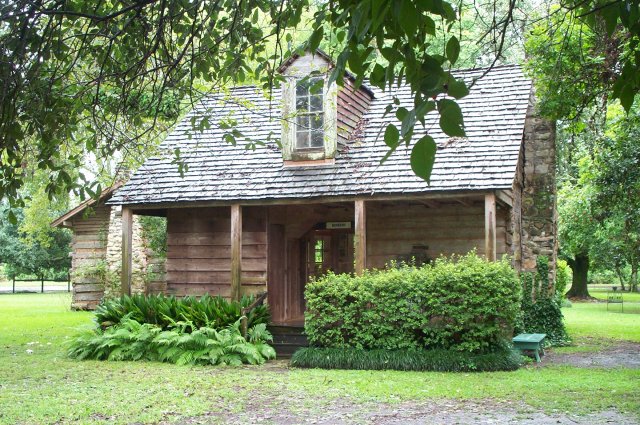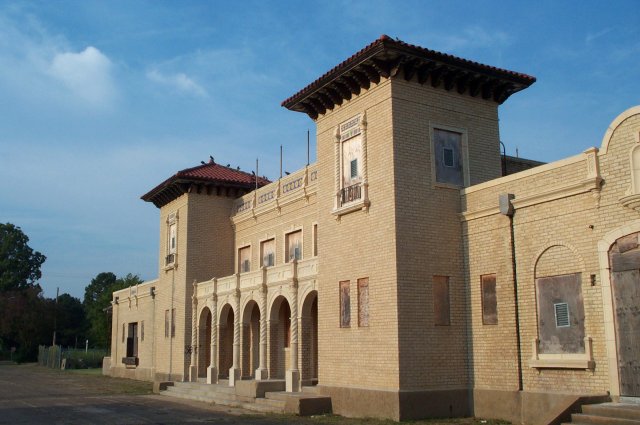TALES OF NORTHEAST TEXAS
By Arthur Babb
(Edited and published by Steven R. Butler, 1998)
Arthur Babb (1865-1951), the author of this work, was my first cousin, three times removed. Although we never met (I was only two years old when he died and as far as I know our paths never crossed even though we lived in the same city), thanks to his writings I feel that I know him much better than any other person in my "family tree" who lived before my time. |
|
|
I also feel a special connection to Arthur because his writings reveal that he possessed a personality very similar to my own--inquiring, reflective, oftentimes skeptical, and alternately optimistic and pessimistic. Tales of Northeast Texas was originally published by me in a very limited edition in 1998. It was transcribed from two of Arthur's own pencil-written works: His "Life Book," which is a memoir mostly of his early years, and a collection of miscellaneous pieces he called "This and That." The collective title, "Tales of Northeast Texas," was my idea. In time, I may also add Arthur's handwritten originals to this site. In the mid-1990s they were given to me by Arthur's granddaughter, Helen Butler, for safekeeping because she has no children to inherit them and also because she sensed that Arthur and I were kindred spirits and therefore, that I would not only appreciate his work but also be a faithful custodian of it. She was not mistaken. Although this work is for all intents and purposes an autobiography, it is full of interesting stories that anyone might enjoy because Arthur wrote in a folksy, easy-to-read conversational style that I find reminiscent of Mark Twain, although I doubt that Arthur was consciously trying to emulate him. What makes this all the more remarkable is that Arthur had very little formal schooling, which is very evident in his poor spelling and punctuation, but which fortunately does not detract from his seemingly natural ability to tell a good story. The "Life Book" begins in 1865, when Arthur was born in a log cabin at Fairfield, Freestone County, Texas, on Halloween. His mother was Lucy Ann (Stanley) Babb, who was one of my great-great-grandmothers. Arthur's older half-sister, Virginia Alice Owen, was my great-grandmother. Our nearest common ancestor was Thomas Stanley, Arthur's maternal grandfather and one of my great-great-great-grandfathers. Arthur grew up on a farm in Limestone County. One of his fondest memories, and consequently one of his most often and best-told stories, is how as a boy he acquired his first horse. This story, which is told in both the "Life Book" and "This and That," was included in a collection called Mustangs and Cow Horses,edited by J. Frank Dobie, Mody C. Boatright, and Harry H. Ransom, and published in hardcover by the Texas Folklore Society in 1940. Arthur's story about how he "saved the world" from certain destruction is another delightful tale. In 1885 Arthur's mother inherited some money from an uncle in Tennessee. This enabled her to leave her hard-drinking husband and buy a farm in Grayson County, Texas. As a young man, Arthur lived there with his mother and younger brother until he realized he was no use as a farmer, at which time he went to work for the Houston and Texas Central Railroad in nearby Denison. Arthur's recollection of how he accompanied my great-grandparents--Will and Alice Butler (with whom he was living before moving to Grayson County), on a train trip (the first he ever made) to Denison, is yet another example of how Arthur was able to turn a personal memory into an interesting story. Arthur's remembrance of how he later rode alone on horseback from Limestone County to Grayson County in the dead of winter, passing through Dallas, was likewise a heartwarming tale. In 1986 I sent this particular story to the Dallas Morning News, which published it as part of the paper's "My Sesqui-Story" series. I titled it "A Winter's Journey Memory." The "Life Book" also tells how Arthur met his wife Bertha and how he courted her, about how after a lengthy illness he learned the rudiments of architectural drawing, and also about all the ups and downs he experienced while working for three different railroads during the late nineteenth and early twentieth centuries, traveling from one end of Texas to the other, superintending the construction of train depots at Sherman, Melissa, Allen (seen in the photograph below) and other places. The book's only shortcoming, in my view, is that Arthur wrote nothing about the untimely death of Bertha at Dallas, in 1916, but I imagine that it was because her passing was too painful for him to remember.
"This and That" consists of a story about a early-day clash between Texas Rangers and Indians, told to Arthur by his father, the re-telling of his stories about his first horse, saving the world, and traveling through Dallas in the winter of 1885, as well as an account his visit to Mount Vernon, George Washington's home, while on a business trip to Washington, D.C. in February 1926. I recently visited Mount Vernon myself (in June 2012), during which time I was as mindful of Arthur's earlier visit as much as anything pertaining to the "Father of Our Country." I have some other writings of Arthur's, which were not a part of either the "Life Book" or "This and That," and which I may also transcribe and publish someday. They consist largely of Arthur's ruminations about the nature of life and the Universe, with which he seems to have been particularly interested during his retirement years. These writings reveal that Arthur, who admitted that he was a religious skeptic in his youth, was likewise skeptical as an adult. Although he does actually say so in any of his writings, the nature of this later work leads me to suspect that Arthur was either an atheist or at the very least an agnostic. During his retirement years, Arthur lived in Dallas, sometimes on his own and sometimes with his daughter Tressa and her husband H. Allen Butler. It was during these years, the 1930s and 1940s, that he took up the art of bookbinding and used his new-found skills to earn a little extra money to supplement his railroad pension. He also traveled, from-time-to-time, to Natchitoches, Louisiana, where he had made some good friends while working there in the mid-1920s. (See "Louisiana Sojourn" below.) About 1949, Arthur went to live in a private nursing home in Midlothian, Texas, where he continued to write and also to draw. I have some of the pencil sketches he made of the "Pike's Peak" farm on which he and his mother and brother lived in the 1880s, as well as some unusual drawings of the view outside the window of his room at the nursing home. As Arthur approached his 86th birthday in ill health, he grew despondent and on October 28, 1951 he committed suicide in his nursing home room by taking an overdose of sleeping pills. A few days later he was buried beside his beloved Bertha in Myrtle Cemetery, at Ennis, Texas. In September 2001 I visited Myrtle Cemetery and I also went to Midlothian, where I discovered that the nursing home where he died was now a funeral home. On October 28, 2001, the fiftieth anniversary of his death, I returned to Ennis, where I placed on Arthur's tombstone a scrap of paper on which I had written one of his favorite quotes: "Who knows, I wonder?" (See photos below.)
Arthur Babb's Louisiana Sojourn, 1926-1927 Although I had been acquainted with Arthur and his "Life Book" since 1977, when I first met his daughter Tressa (who is now deceased), it was not until after I had transcribed and published it in 1998 that I made a belated effort to "fill in the gaps" by researching public records. In doing so, I discovered that there was a lot more about him that I did not know (some of which is noted above)! I also discovered, to my surprise, that in 1996 Northwestern State University in Natchitoches, Louisiana published the "Sketchbook" he mentions in the "Life Book," which covers the period he spent in Louisiana from 1926 to 1927, working for the Texas and Pacific Railway. Naturally, I sent off for a copy and read it. I believe you can still purchase My Sketchbook 1926-27: Memoirs of Natchitoches and Plaquemine, Louisiana from NSU Press Publications.
The reason for Arthur being in Natchitoches in the first place, as mentioned above, was to supervise the construction of a new Texas and Pacific Railway station. The building, which has long been vacant, is still standing (or at least it was still there the last time I visited Natchitoches in 2006). In 2001 I was told by some of the locals that there was a plan to turn the building into a museum of some sort but it appears that so far, nothing has come of it. It is an interesting old building. Although the style is supposedly Italian, it looks Spanish to me and I think that it would be much more "at home" somewhere in South Texas than in Eastern Louisiana. In 1987 the station was placed on the National Register of Historic Places and has also been documented on the Historic American Buildings Survey.
|
This website copyright © 1996-2012 by Steven R. Butler, Ph.D. All rights reserved.


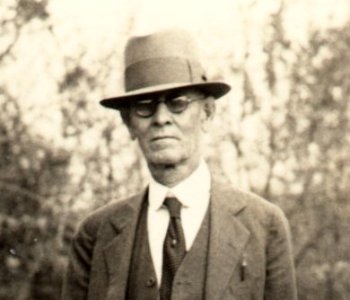
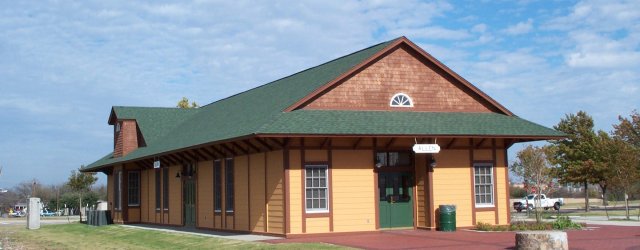
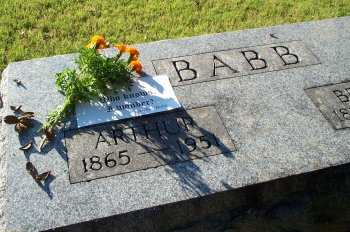
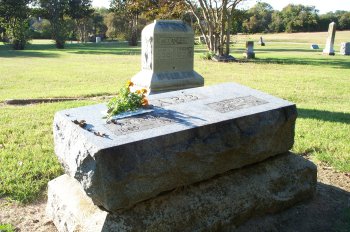
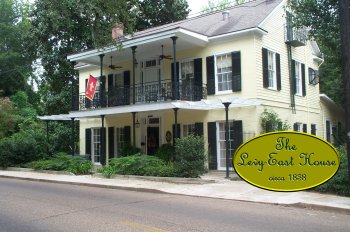 Curious to see some of the places mentioned in Arthur's "Sketchbook," my wife and I took an anniversary trip to Natchitoches in September 2001. We spent the night in the Levy-East House, a beautiful old Greek-Revival bed and breakfast inn. During the time (1926-1927) that Arthur boarded in another house directly across Jefferson Street from the Levy-East property he got to know the Levy family personally and was often a guest in their home. It was a pleasure to stay there and to sit in the same parlor where Arthur had once sat (and also photographed) and to walk the same ground where he had once walked. I was very saddened to learn, while writing this piece, that the Levy-East House was destroyed by fire in June 2012. If Arthur was still alive, I am sure he would be heartbroken to hear this news. I am glad we got a chance not only to see the place and but also to spend the night there while it still stood. The smaller, one-story house in which Arthur boarded during his sojourn is still standing however (or at least it was the last time I looked).
Curious to see some of the places mentioned in Arthur's "Sketchbook," my wife and I took an anniversary trip to Natchitoches in September 2001. We spent the night in the Levy-East House, a beautiful old Greek-Revival bed and breakfast inn. During the time (1926-1927) that Arthur boarded in another house directly across Jefferson Street from the Levy-East property he got to know the Levy family personally and was often a guest in their home. It was a pleasure to stay there and to sit in the same parlor where Arthur had once sat (and also photographed) and to walk the same ground where he had once walked. I was very saddened to learn, while writing this piece, that the Levy-East House was destroyed by fire in June 2012. If Arthur was still alive, I am sure he would be heartbroken to hear this news. I am glad we got a chance not only to see the place and but also to spend the night there while it still stood. The smaller, one-story house in which Arthur boarded during his sojourn is still standing however (or at least it was the last time I looked).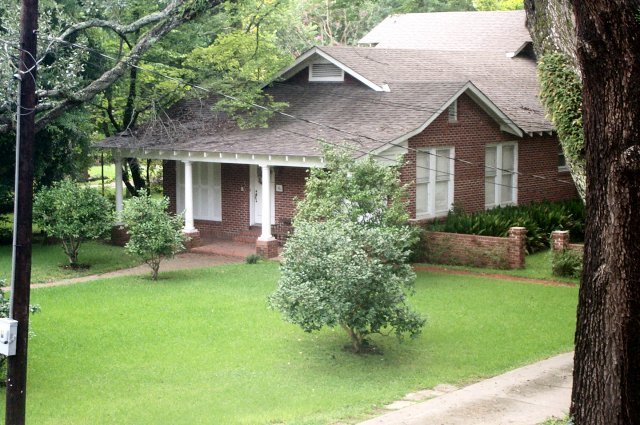
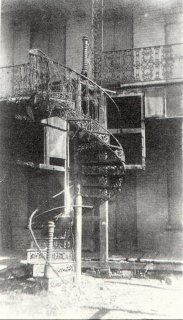
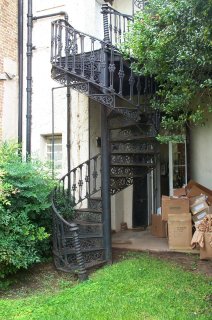
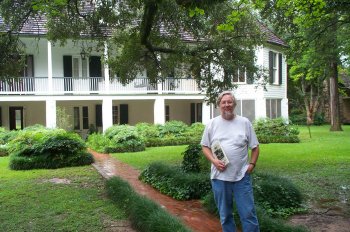 Another one of Arthur's favorite spots in the area was Melrose Plantation, where he spent many pleasant hours as a guest of Miss Cammie Henry, who at that time was the property's owner. Miss Cammie loved both the arts and artists and during the 1920s and 1930s allowed a collection of writers, painters, sculptors, and other artistic types to live on the plantation for free, provided they were enaged in some artistic work and would talk about it with her and her other guests over dinner each evening. In his retirement, Arthur took up bookbinding as a hobby and Miss Cammie not only allowed him to join her little colony of artists from time to time, she had a little log cabin built just for him, where he could do his bookbinding work. The cabin is still standing today on the grounds of the plantation, where when I visited in 2001, it was being used as a gift shop.
Another one of Arthur's favorite spots in the area was Melrose Plantation, where he spent many pleasant hours as a guest of Miss Cammie Henry, who at that time was the property's owner. Miss Cammie loved both the arts and artists and during the 1920s and 1930s allowed a collection of writers, painters, sculptors, and other artistic types to live on the plantation for free, provided they were enaged in some artistic work and would talk about it with her and her other guests over dinner each evening. In his retirement, Arthur took up bookbinding as a hobby and Miss Cammie not only allowed him to join her little colony of artists from time to time, she had a little log cabin built just for him, where he could do his bookbinding work. The cabin is still standing today on the grounds of the plantation, where when I visited in 2001, it was being used as a gift shop.